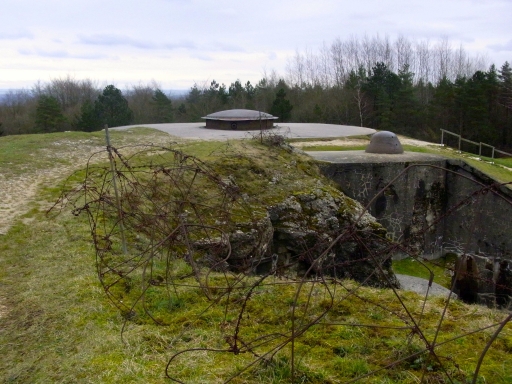A massive artillery bombardment on the morning of February 21st 1916 signalled the start of the German attack on Verdun, the longest single battle of the First World War.
More than 1,200 guns opened fire before German troops began their assault on fortifications of major symbolic inportance to France.
Even by the standards of the Great War, the Battle of Verdun was a particularly brutal campaign of attrition, fuelled by the determination of both sides not to give way as the struggle wore on.
The battle was to last 300 days, almost until Christmas, on a narrow front stretching no more than 35 kilometres (21 miles).
About 60 million shells are estimated to have been fired here during 1916.
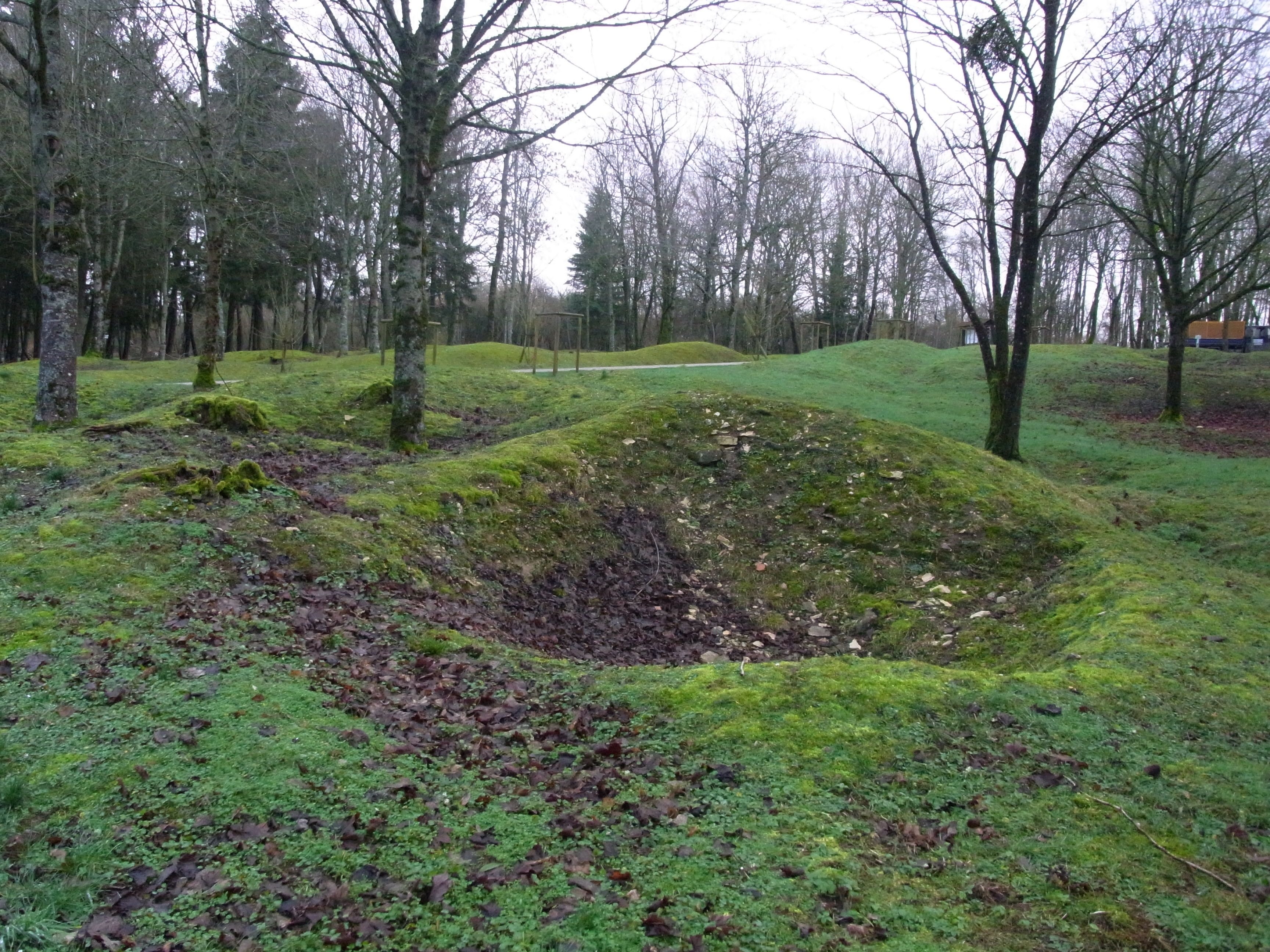 The Verdun battlefields are still pitted with shell craters (Photo: Centenary News)
The Verdun battlefields are still pitted with shell craters (Photo: Centenary News)
Soldiers also had to contend with poison gas and flamethrower attacks, as well as food and water shortages, and weather extremes from heavy snow to summer heat and torrential rain.
French troops and supplies had to be funnelled into Verdun along a single road, known as ‘La Voie Sacrée’ (Sacred Way).
The 10-month battle cost more than 700,000 French and German casualties (killed, wounded or missing), and forced changes in the military leaderships of both countries.
General Erich von Falkenhayn’s motives for launching the Verdun offensive, with an army led by Germany’s Crown Prince Wilhelm, are still debated by historians.
In his post-war memoirs, the German army chief wrote of his belief that French forces would ‘bleed to death’ fighting for an area they felt compelled to defend.
By the end, German losses were close to those of the French.
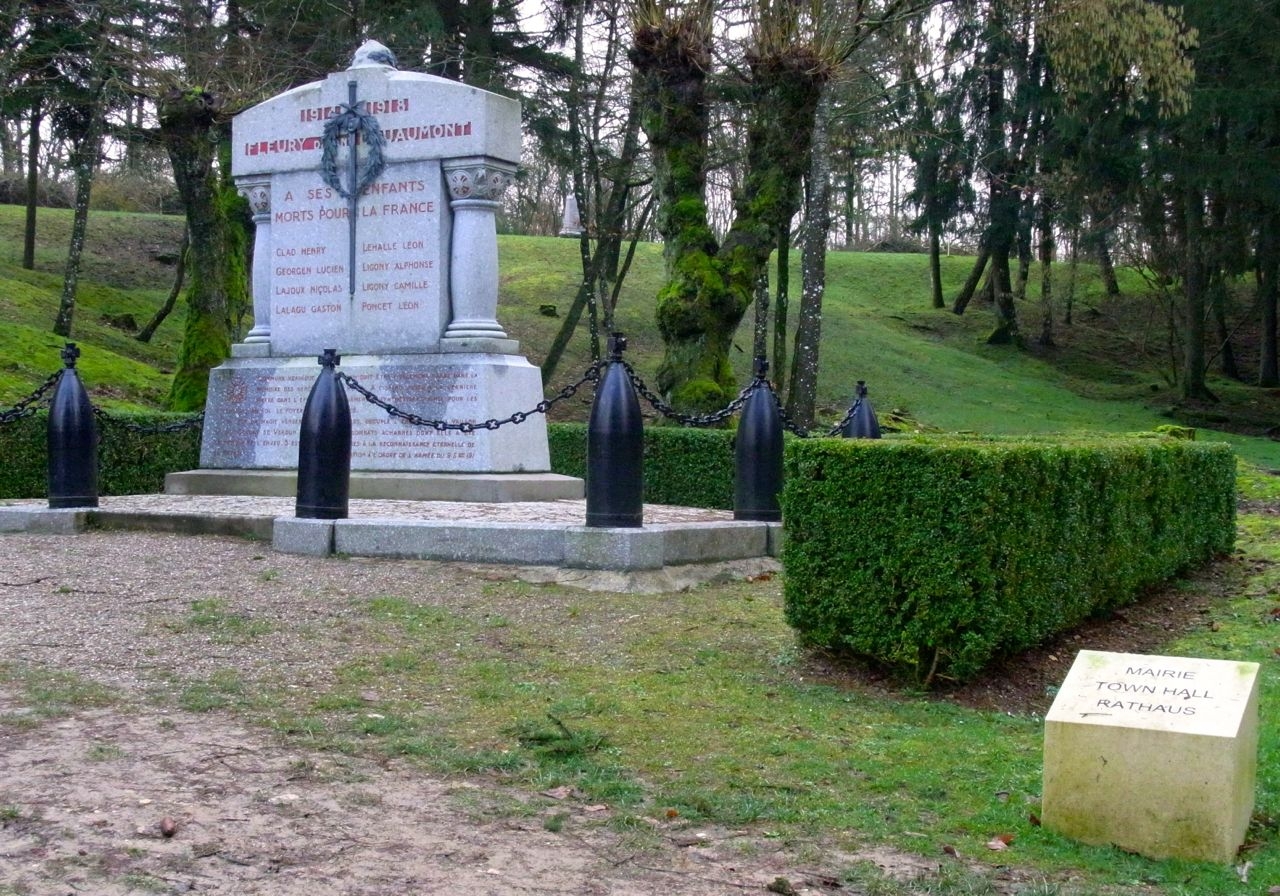
Memorial on the site of the Mairie at Fleury-devant-Douaumont, one of nine villages destroyed during the Battle of Verdun. It was the scene of intense fighting in June 1916 as the Germans reached their closest point to Verdun itself (Photo: Centenary News)
Ringed by fortresses, Verdun was a key part of a defensive system aimed at protecting eastern France after the loss of Alsace-Lorraine in the Franco-Prussian War.
The initial German attack was directed at the heights above Verdun on the right bank of the River Meuse, and was later extended to the left bank to contain French artillery fire.
France suffered a major blow within days, losing the biggest of the Verdun fortresses on February 25th to a raid by a handful of German soldiers.
Fort Douaumont was undermanned, and its firepower had been reduced in 1915 with the removal of many of its guns to support French offensives elsewhere on the Western Front.
Such was the alarm that General Philippe Pétain, a rare exponent of the defensive, was put in charge at Verdun with orders to hold his ground.
Convoys of trucks commandeered from across France shuttled night and day along the 70-km route of the Voie Sacrée to keep his armies supplied.
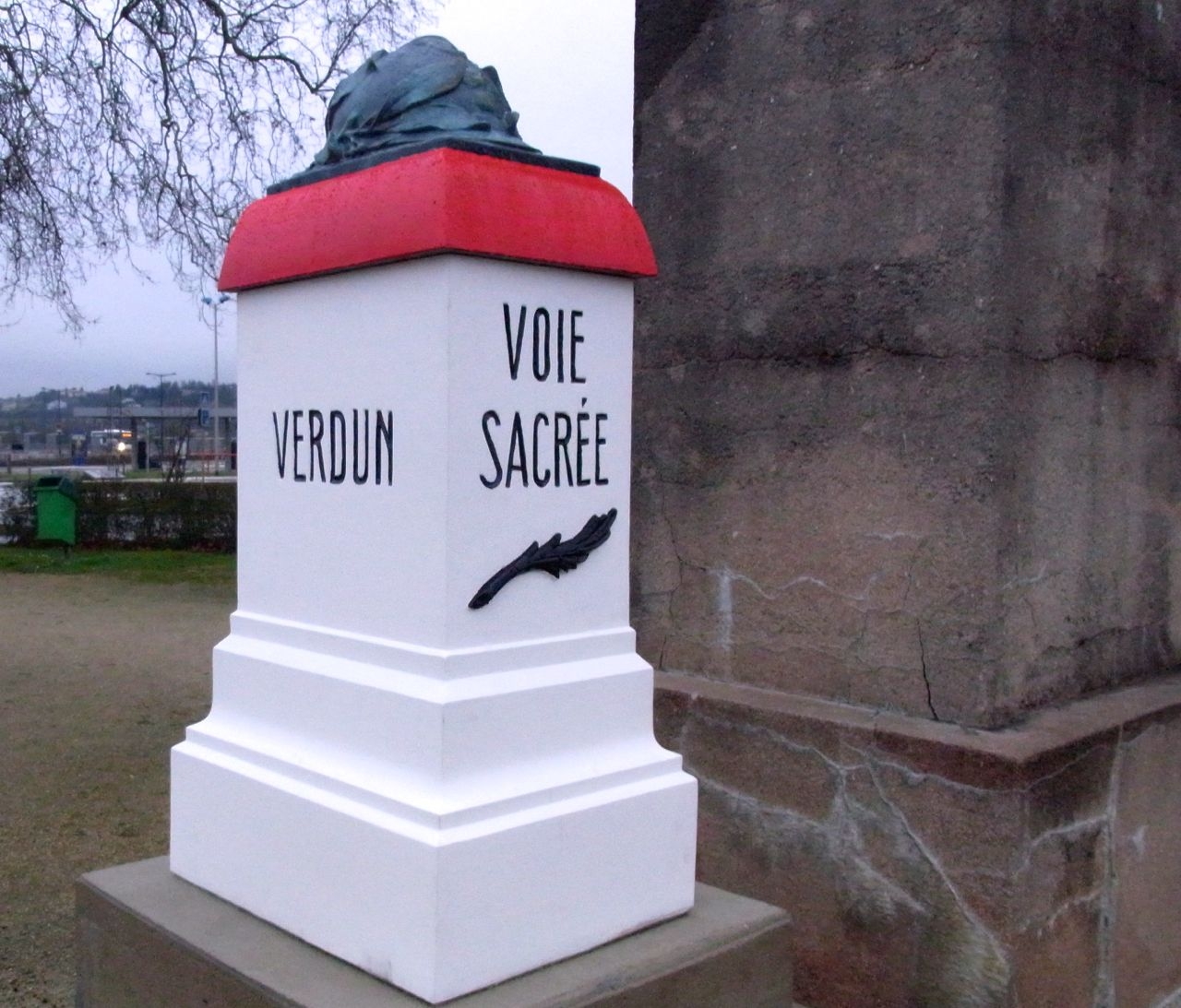 One of the characteristic kilometre markers, surmounted by a French army helmet, commemorating the lifeline of ‘La Voie Sacrée’ between Verdun and Bar-le-Duc (Photo: Centenary News)
One of the characteristic kilometre markers, surmounted by a French army helmet, commemorating the lifeline of ‘La Voie Sacrée’ between Verdun and Bar-le-Duc (Photo: Centenary News)
Pétain introduced a system of rapid troop rotation to help ease the strain on his men. Three quarters of the French Army passed through Verdun in 1916.
‘Ils ne passeront pas’ (they shall not pass) is an order often attributed to Pétain, but it was issued by his successor at Verdun, General Robert Nivelle, at the height of a renewed German threat in June.
The Germans were forced back on the defensive that summer, under pressure elsewhere from the British-led attack on the Somme and Russia’s Brusilov Offensive.
By the end of 1916, France had recaptured important positions on the right bank of the Meuse, including Forts Douaumont and Vaux.
But the fighting around Verdun lasted until 1918, involving American forces in the Meuse-Argonne offensive during the closing stages of the war.
The Battle of Verdun resulted in shake-ups of both the German and French high commands in 1916.
Falkenhayn was dismissed as Germany’s army chief in August, but given a new command on the Eastern Front. He was replaced by the duo of Field Marshal Hindenburg and General Erich Ludendorff, victors of the Battle of Tannenberg against Russia in September 1914.
Following the autumn successes at Verdun, General Nivelle succeeded Joseph Joffre as French commander-in-chief. His appointment was short-lived, ending amid the failure of an offensive on the Chemin des Dames in the spring of 1917.
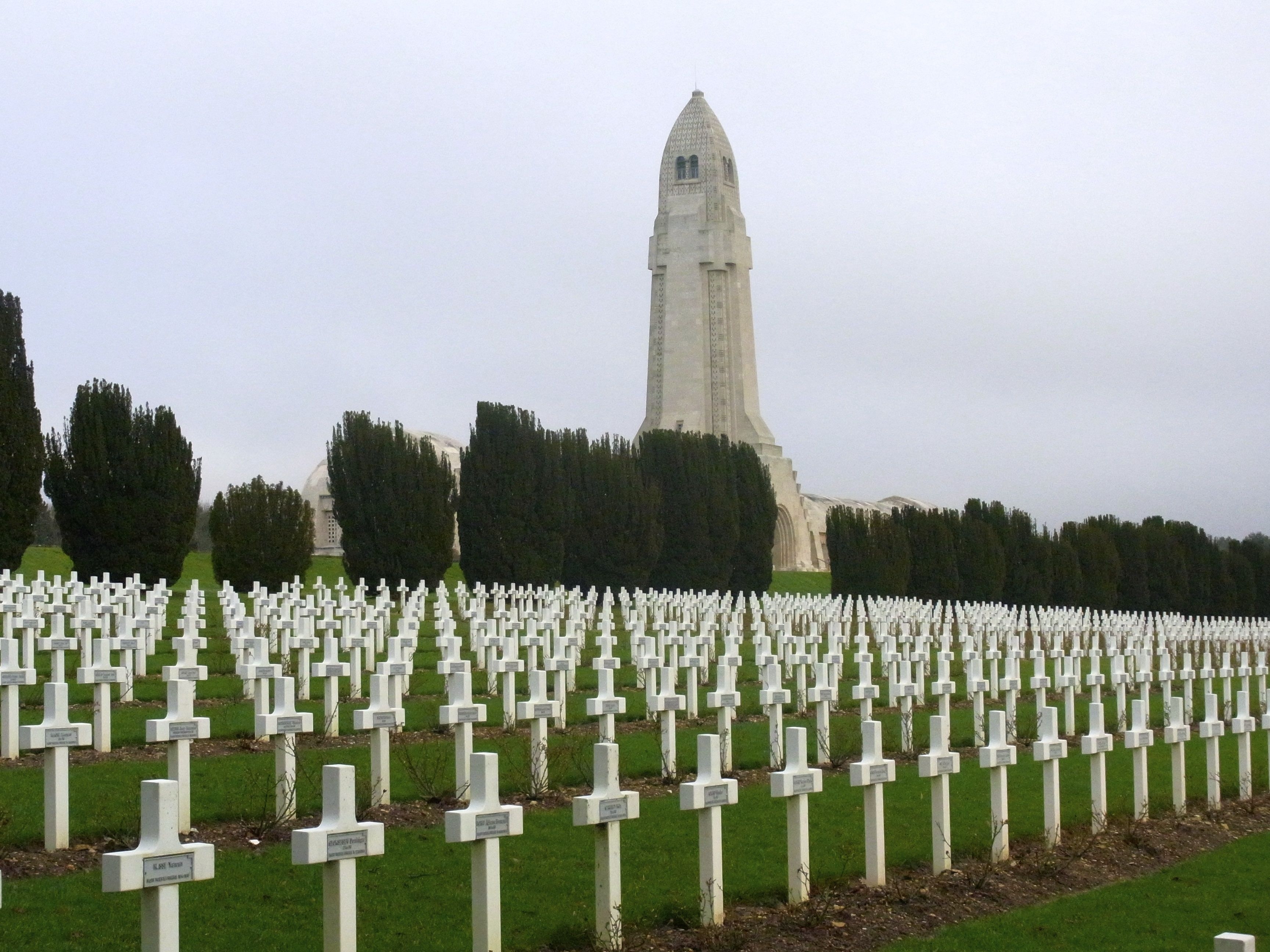 Douaumont Ossuary, inaugurated in 1932, remembers both French and German soldiers who fell at Verdun (Photo: Centenary News)
Douaumont Ossuary, inaugurated in 1932, remembers both French and German soldiers who fell at Verdun (Photo: Centenary News)
Sources: Mémorial de Verdun/Wikipedia/various
Compiled by CN Editor Peter Alhadeff, reporting from Verdun
All images © Centenary News
